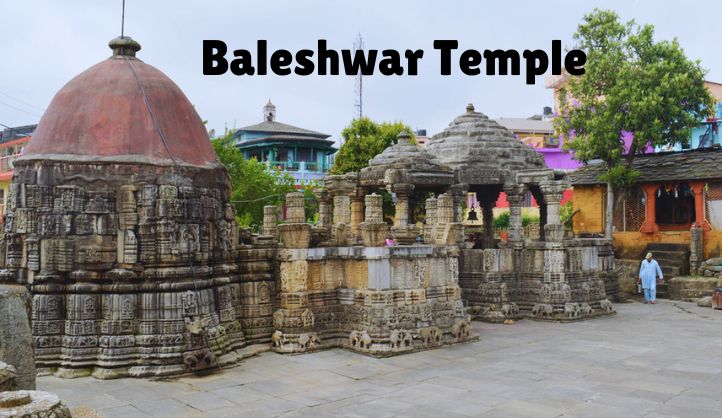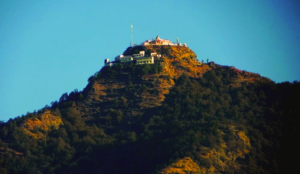In the hills of Uttarakhand, the Baleshwar Temple in Champawat stands as a testament to the region’s rich cultural and architectural heritage. This ancient temple, dedicated to Lord Shiva, holds profound significance both historically and spiritually, attracting pilgrims and history enthusiasts alike.
Historical Significance
The Baleshwar Temple dates back to the 10th century, believed to have been built by the rulers of the Chand dynasty. This dynasty played a crucial role in shaping the cultural landscape of the Kumaon region during medieval times. The temple’s architecture reflects the intricate craftsmanship of that era, characterized by stone carvings and detailed sculptures.
Architectural Marvel
Architecturally, the Baleshwar Temple is a marvel in stone. Its structure is adorned with intricate carvings depicting mythological scenes from Hindu scriptures, showcasing the artistic prowess of ancient artisans. The temple follows the Nagara style of architecture typical of northern India, characterized by its towering spire (shikhara) and elaborate entrance (mandapa).
By Air
The nearest airport to Champawat is Pantnagar Airport, located approximately 180 kilometers away. Pantnagar Airport operates flights from Delhi and other major cities. From Pantnagar Airport, you can hire a taxi or take a bus to reach Champawat, which takes around 5-6 hours.
By Train
If you are traveling by train, Kathgodam is the nearest railway station to Champawat, located about 75 kilometers away. From Kathgodam, you can hire a taxi or take a bus to Champawat, which takes approximately 2-3 hours.
By Road
Champawat is well-connected by road to major cities and towns in Uttarakhand and nearby states. Here’s how you can reach Champawat by road. Champawat is about 370 kilometers from Dehradun. Take NH7 via Haridwar, Rudrapur, and Haldwani to reach Champawat. The journey usually takes around 8-10 hours.
Spiritual Significance
Devotees flock to the Baleshwar Temple to seek blessings from Lord Shiva, the presiding deity known as Baleshwar. The sanctum sanctorum houses a Shiva Linga, a sacred symbol of Lord Shiva’s cosmic presence. The serene ambiance of the temple, surrounded by the tranquil beauty of Champawat’s hills, creates an atmosphere conducive to meditation and spiritual reflection.
Cultural Heritage
Beyond its religious importance, the Baleshwar Temple is a treasure trove of cultural heritage. It stands as a symbol of the region’s enduring traditions and architectural excellence, offering visitors a glimpse into Uttarakhand’s rich past. The temple’s annual festivals, such as Mahashivaratri, attract devotees and tourists from across the country, adding vibrancy to the local cultural calendar.
Visitor Experience
Visiting the Baleshwar Temple is not just a spiritual journey but also an opportunity to immerse oneself in history and art. The tranquil surroundings of Champawat, coupled with the temple’s majestic architecture, provide a serene retreat for travelers seeking solace amidst nature and ancient wonders.
Conclusion
In conclusion, the Baleshwar Temple in Champawat, Uttarakhand, stands as a testament to the region’s rich cultural and spiritual heritage. Its ancient architecture, coupled with its serene surroundings, offers visitors a memorable experience steeped in history and devotion. Whether you are a history enthusiast, a spiritual seeker, or a traveler exploring Uttarakhand’s hidden gems, a visit to Baleshwar Temple promises to be a journey of discovery and tranquility.
FAQs about Baleshwar Temple
1. What is the significance of Baleshwar Temple?
Baleshwar Temple is dedicated to Lord Shiva and holds historical and spiritual significance. It is believed to have been built in the 10th century by the rulers of the Chand dynasty, showcasing exquisite Nagara-style architecture.
2. Where is Baleshwar Temple located?
Baleshwar Temple is located in Champawat, a town in the Champawat district of Uttarakhand, India. It is nestled amidst the picturesque hills of the Kumaon region.
3. How old is Baleshwar Temple?
The temple dates back to the 10th century, making it over a thousand years old. It reflects the architectural and cultural heritage of medieval India, particularly the Kumaon region.
4. What is the architecture of Baleshwar Temple like?
The temple follows the Nagara style of architecture typical of northern India. It features a towering spire (shikhara) and intricate stone carvings depicting scenes from Hindu mythology. The mandapa (entrance hall) and the sanctum sanctorum are notable for their artistic detailing.
5. What are the festivals celebrated at Baleshwar Temple?
The main festival celebrated at Baleshwar Temple is Mahashivaratri, dedicated to Lord Shiva. It attracts devotees from across the region who come to offer prayers and seek blessings. Other festivals include Shravan Maas (monsoon month dedicated to Lord Shiva) and local fairs that add vibrancy to the temple’s cultural calendar.





